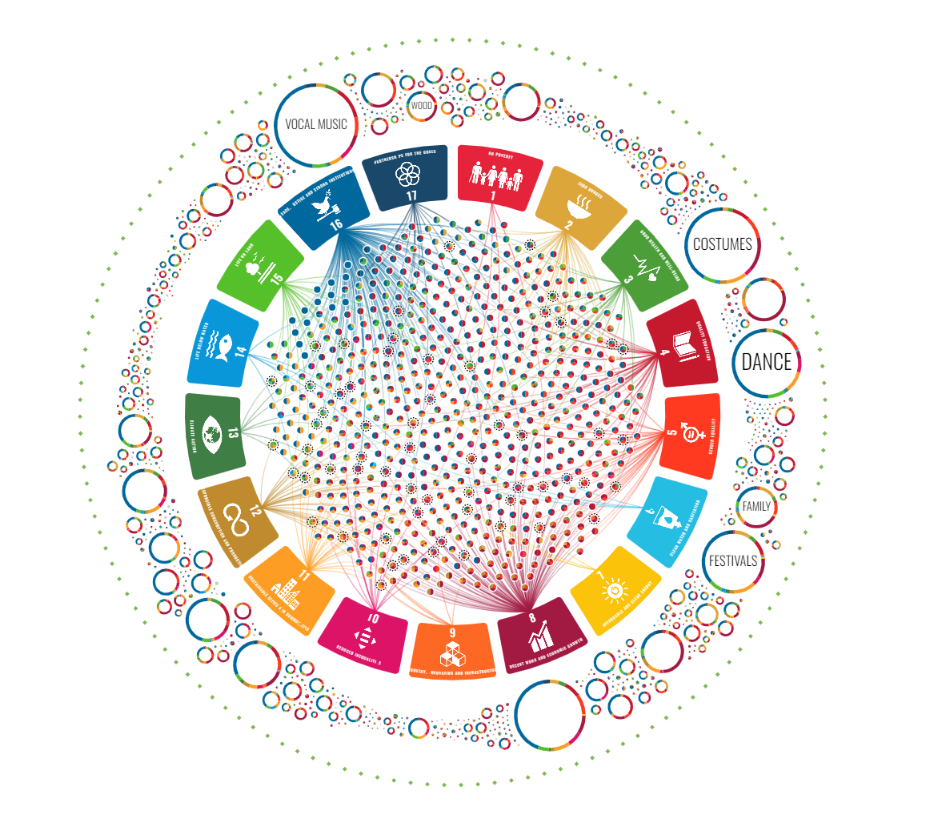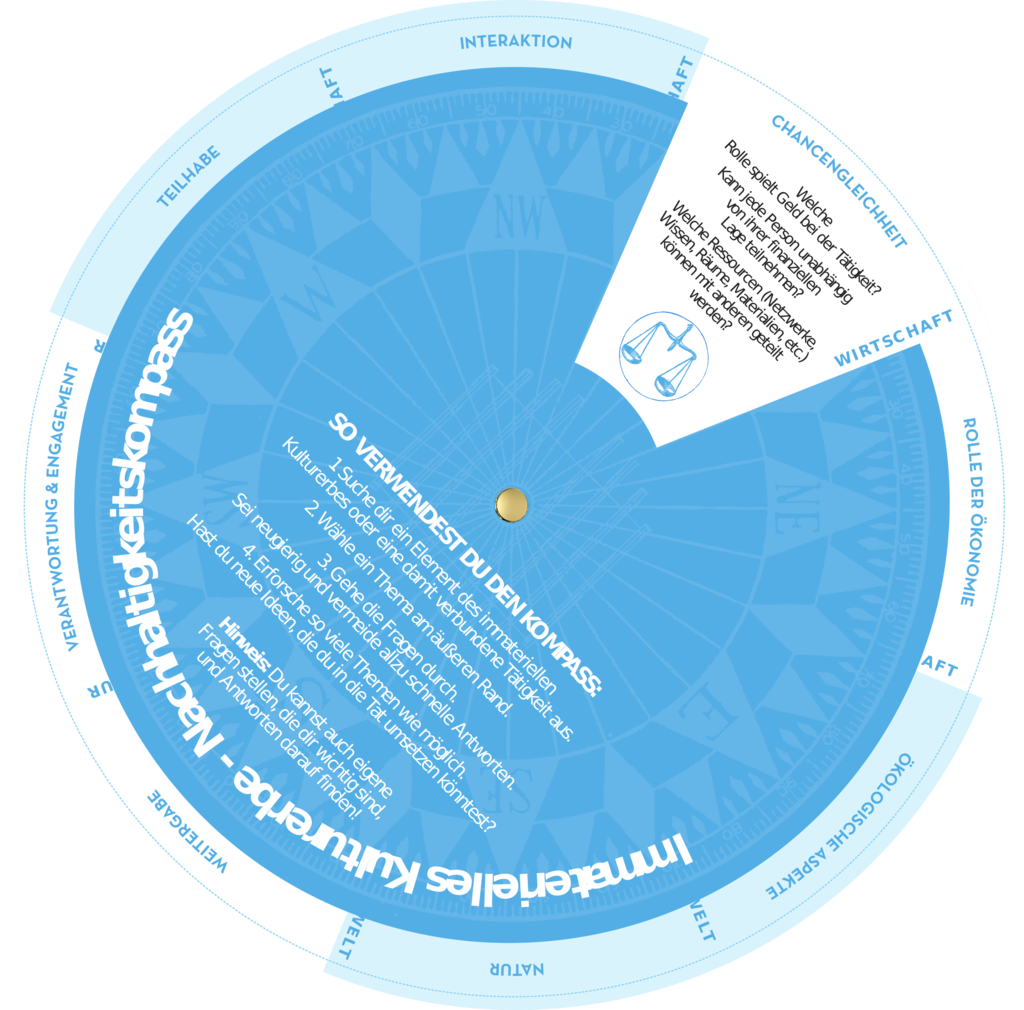The Convention text of the Convention for the Safeguarding of the Intangible Cultural Heritage emphasizes the "importance of intangible cultural heritage as a driver of cultural diversity and a guarantor of development". The Sustainable Development Goals (SDGs) were adopted by the United Nations in 2015. They represent the pursuit of a future that is inclusive, equal, peaceful and sustainable. The 2030 Agenda for Sustainable Development is an action plan that describes the three dimensions of sustainability - economic, social and environmental - and defines the individual areas of action with 17 development goals. In relation to the 17 SDGs, the 70th United Nations General Assembly in 2015 also emphasized the contribution of culture to sustainable development, stating that intangible cultural heritage can contribute especially to Goal 2 (no hunger), Goal 4 (quality education), Goal 11 (sustainable cities and communities), and Goal 17 (partnerships to achieve the goals).
Many of the elements of the National Inventory of Intangible Cultural Heritage, make important contributions in achieving the Sustainable Development Goals. For example, to Goal 11.5: Reduce the Impact of Natural Disasters. The focus on modern technologies and the outsourcing of responsibilities have led to a rapid loss of ownership, individual competence, as well as the knowledge and skills developed and tested over generations. This can have dramatic effects, especially with regard to natural hazards and global warming. The further development of centuries-old knowledge on how to deal with and assess natural hazards and conditions strengthens adaptive capacity to climate-related hazards and natural disasters. The "experiential knowledge concerning avalanche risk management" (included in the Representative List of the Intangible Cultural Heritage of Humanity 2018) or the "knowledge of alpinism and skills of mountain and ski guides" (included 2021) have been passed down orally for centuries, further developed and nowadays supplemented by scientific research. In this way, they ensure the sustainable use of the natural environment in the Alpine region.
UNESCO has tried to make the links between the 17 SDGs and intangible cultural heritage visible through various initiatives. Among other things, through various online tools, such as the "Dive Into Intangible Heritage" or the publication of a series of case studies that illustrate the connections. These efforts are complemented by national initiatives, for example Finland's initiative to create a so-called Sustainability Wheel, through which heritage holders themselves can further explore which sustainability goals they contribute to or could contribute to in the future.



![[Translate to EN:] © J. Ségur/ZED, with the permission of UNESCO](/fileadmin/_processed_/d/b/csm_Convention-2003-IKE_0832a6a47d.jpg)
![[Translate to EN:] © ÖUK](/fileadmin/_processed_/3/9/csm_P1011318_7eac86402f.jpg)

![[Translate to EN:] © Weitblickfilm](/fileadmin/_processed_/9/8/csm_Workshop_17_2dee1e1fd8.jpg)